London is a beautiful cultural city where everyone will find something they love. Historical sights, art, nature, modern architecture, or even Harry Potter locations, there’s truly a lot to explore in London. Let’s take a look at what to see and do in London, when to visit, how to get there, and everything worth seeing.

Where to Stay in London – to be Close to the Center
If you’re looking at hotels and seeking the best value for money, performance, and proximity to the center, then check out The Z Hotel Trafalgar. From the hotel, you can also easily reach other parts of the city, thanks to excellent metro and bus connections.
If you’re not as concerned about the price, then take a look at The Cavendish London or the slightly more expensive and much better-rated Middle Eight – Preferred Hotels and Resorts.
You might also be interested in: What to Do in Ireland
Weather in London – when to Go
London is known for frequent rain. Unfortunately, this is true. Unfavorable weather prevails here from November to January, and most sights are also closed. If you want the best weather, go in late spring or summer. Additionally, it rains the least here in July and August.
| Month | 1 | 2 | 3 | 4 | 5 | 6 | 7 | 8 | 9 | 10 | 11 | 12 |
| 6 °C | 6 °C | 8 °C | 10 °C | 13 °C | 16 °C | 19 °C | 19 °C | 16 °C | 12 °C | 9 °C | 7°C |
How to get to London: Transport from the Czech Republic to London
By Car to London
If you are departing from Prague, you will cover a distance of approximately 1270 km, and the journey will take more than 13 hours. Whichever route you take, you must always reach France, from where you will travel by ferry or Eurotunnel to England.
- From Prague northwards via Ústí nad Labem, Dresden, Dortmund, and Antwerp to Calais or Dunkirk.
- From Prague towards Plzeň, then via Nuremberg, Frankfurt am Main, Cologne, Brussels, and again Calais or Dunkirk. This is the fastest possible route.
If your starting point is Brno, the routes are essentially the same; you just need to get to Prague or Plzeň from Brno first. Again, your primary destination is France.
From France, you then have two options:
- Ferry – ferries operate from the ports in Calais and Dunkirk. The journey will take about 1.5 – 2 hours, depending on which port you choose. If you wish to use this mode of transport, it’s advisable to book your spot well in advance.
- Eurotunnel – runs from Calais, France, to Folkestone, England. You’ll be on the other side in 35 minutes.
By Bus to London
You can also travel to England by bus. FlixBus and RegioJet provide services there. The journey takes about 20 hours, often departing overnight. A round-trip ticket can cost approximately 1500 to 3000 CZK, sometimes more. The bus company Eurolines also departs from Plzeň, Ústí nad Labem, or Hradec Králové, in addition to Prague and Brno.
By Train to London
On a train from Prague to London, you’ll spend over 17 hours and face many transfers. You can also use the Eurostar high-speed train, which travels through the Eurotunnel, but it only departs from Paris and Brussels.
By Plane to London
London is most accessible by plane. If you prefer traditional airlines, British Airways and Austrian Airlines fly to London. If you’d rather use a low-cost carrier, Ryanair flies from Prague, Brno, and Ostrava, while Wizzair will take you to Luton Airport. You can also use Easyjet.
Tickets will typically cost you around 1500 – 3000 CZK, but with low-cost airlines, you might find a ticket for 500 CZK. Read about how to find cheap flights.
Driving in England
To drive in Britain, you must have an international driving permit and a valid green card. Then you must not forget that they drive on the left here, so it’s better to rent a British car adapted for local traffic for these purposes.
Transport in London
The best way to travel around London is by public transport. In addition to classic public transport, you can also use special London transport options.
Double-decker Buses
The typical red double-decker bus is one of London’s many symbols. They run very frequently and can take you everywhere, as they operate on regular bus routes. These buses are marked with numbers 9, 12, 15, 49, 74, etc. 453. Tickets cost from 7.70 to 14.10 GBP depending on the zone. Discounts for children or students do not apply.
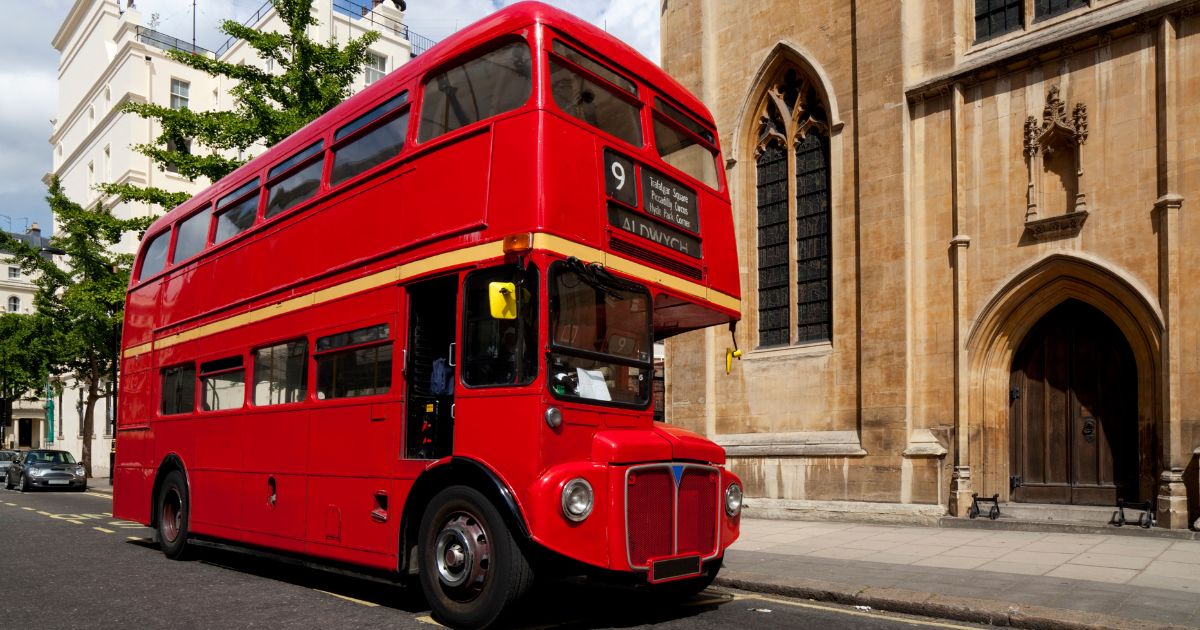
By Train in London
You can buy tickets and search for train connections on the National Rail website. It’s always advisable to buy tickets in advance, otherwise, you won’t be guaranteed a seat. However, trains in England are more expensive than buses and are especially suitable for inter-city travel.
By Boat in London
Boats do not serve for transport from one bank to another, but rather along the river from one part of London to another. Boats on the River Thames are called River Bus. Standard public transport tickets are not valid here; you must buy them separately on site. The River Bus runs every 20 minutes, and during the cruise, you can see the Parliament, the Tower of London, Greenwich, and other beauties of London.
Taxi
In London, you can hail a classic black taxi. Just wave at the driver, and they will stop for you. However, it’s not cheap; you’ll pay 3 GBP just for the pickup and then 1.20 GBP per kilometer.
How to Buy Public Transport Tickets
Contactless Card Payment
If you own a contactless payment card, you can use it on any public transport for easy ticket purchases. Simply tap your card on the turnstile when boarding and again when exiting public transport.
Oyster Card
This “Oyster card” works the same way as paying with your own card. You load any desired credit onto it, which is then deducted when you tap it on the yellow turnstile. Tickets with this card cost the same, but the card itself costs 7 GBP. It’s worth it if you’re traveling with children, as they get cheaper fares with the Oyster Card. With the card, you also get a discount on the River Bus.

What to See in London: 56 Tips for London Sights
There’s truly a lot to see in London, and few people manage to see everything in one visit. Let’s take a look at the most important sights you shouldn’t miss, as well as what to do in London.
Buckingham Palace
One of London’s greatest symbols and the residence of the British monarch. Significant state events are also held here. To better imagine the palace’s size, it has a total of 775 rooms. It was built in 1703 for the Duke of Buckingham and Normanby, though it was originally intended for private use only.
In 1826, the building was renovated into a palace and became the main royal residence in 1837 during the reign of Queen Victoria. During World War II, Buckingham Palace was targeted by air raids no less than seven times. It is not generally accessible to the public, but the Changing of the Guard is a popular tourist attraction. From August to September, the palace’s west wing is accessible to the public, with up to 200 guides leading tours through the palace.
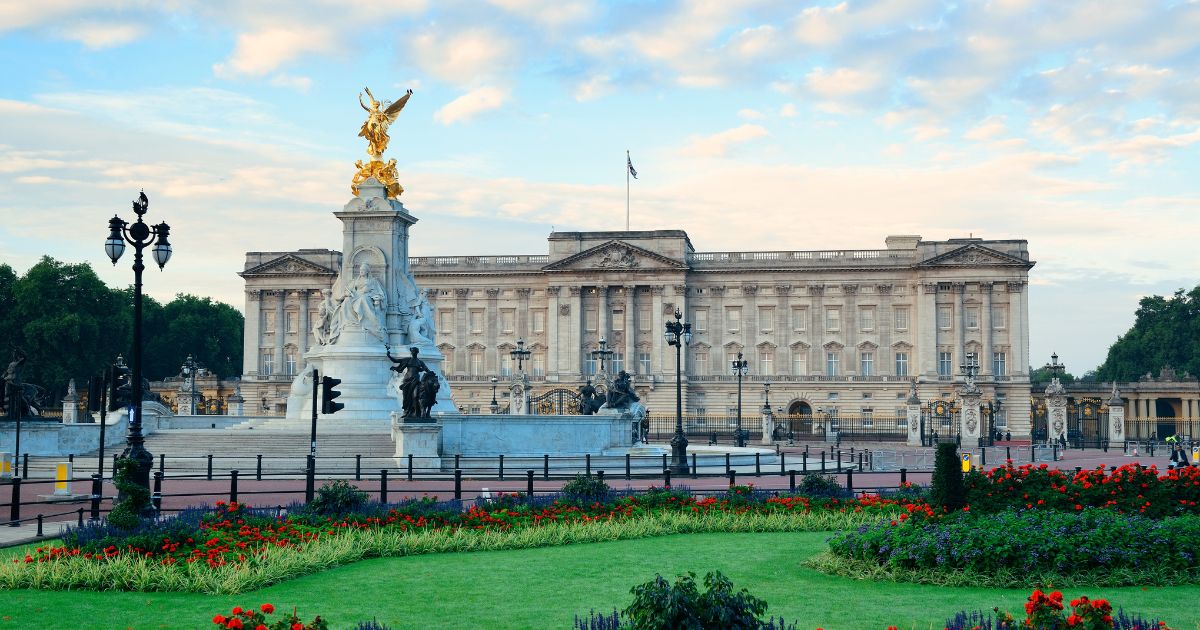
Big Ben
Big Ben usually refers to the entire tower, but in reality, it is the Great Bell in Elizabeth Tower, which is part of the Palace of Westminster. It is the largest of the five bells in the tower. The tower’s architect in the 19th century was Augustus Pugin. It is 96 meters tall, and there are a total of 334 steps leading to the top. On the tower, you can notice symbols of all four nations of the United Kingdom.
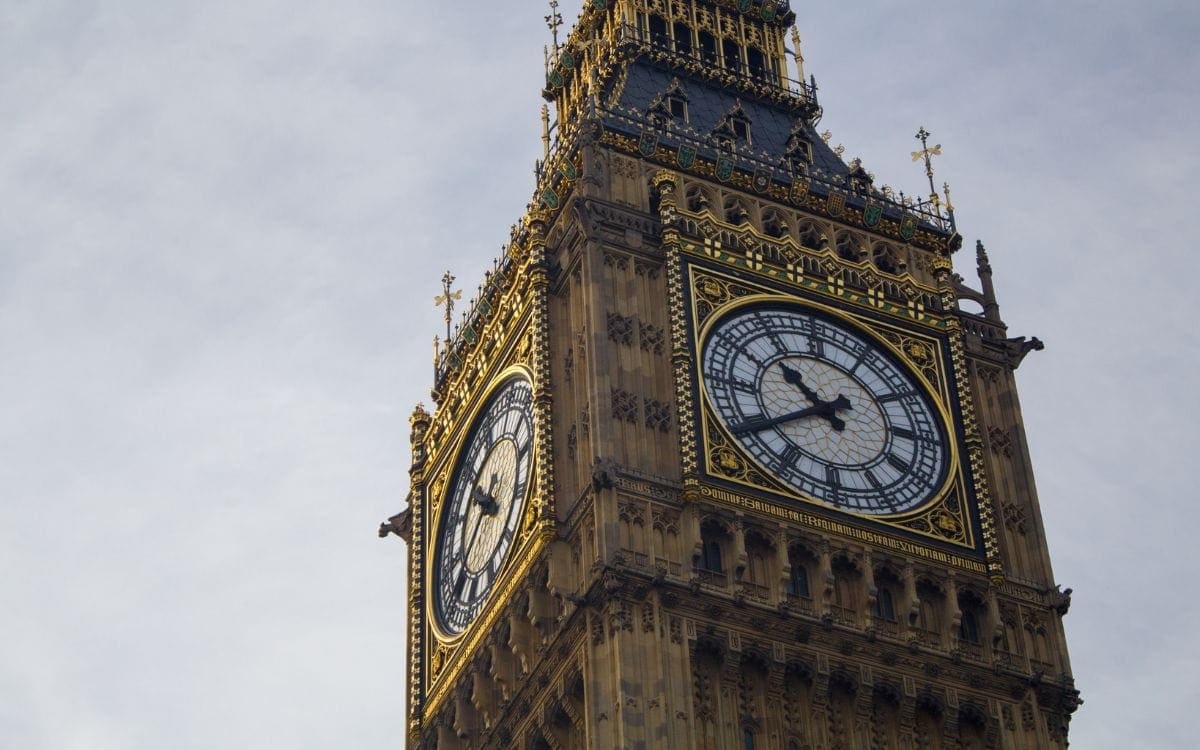
London Eye
The London Eye, another of London’s many iconic symbols, opened in 1999. Until 2006, it was the largest observation wheel in the world. It measures 135 meters, has a total of 32 capsules, and one ride takes 30 minutes. At the top, you’ll get a breathtaking view of the city. Tickets start from 30.50 GBP.
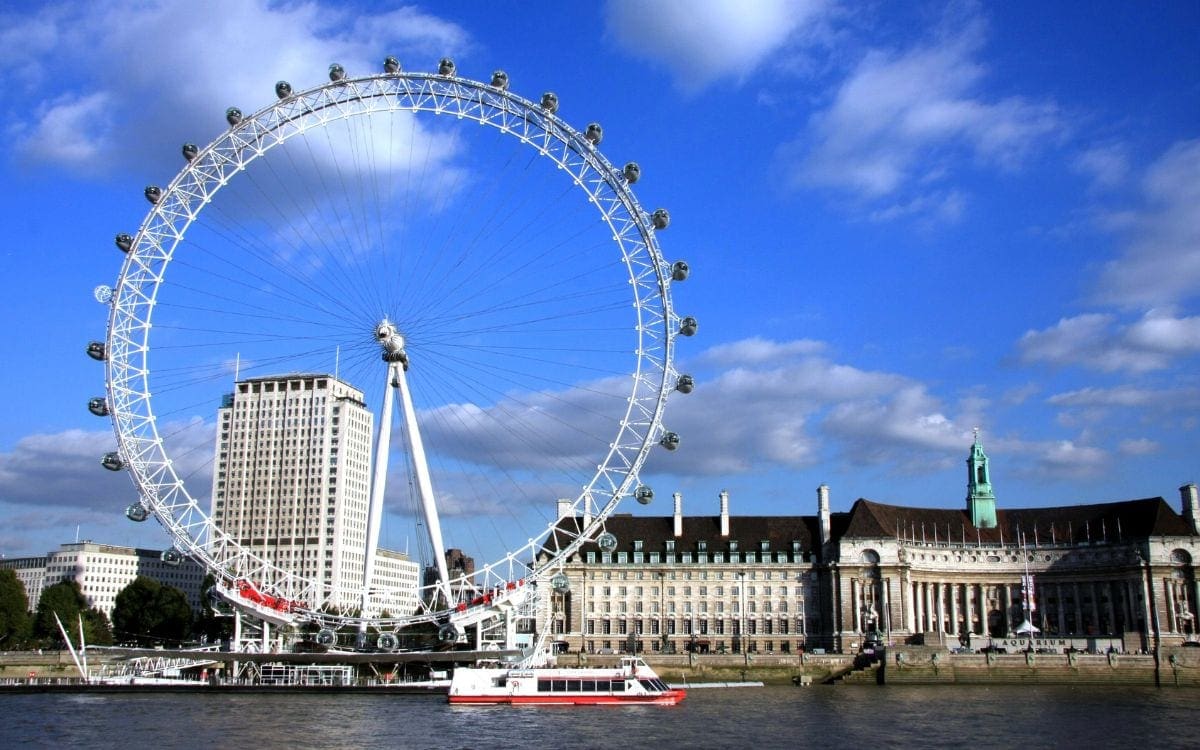
Tower Bridge
Tower Bridge is a suspension and bascule bridge spanning the River Thames, where it has stood since 1894. More than 40,000 cars cross it daily. On each side stands a tower, where you’ll find an exhibition with a permanent display not only about the bridge’s history. You can also visit the control center, but you’ll need to buy a separate ticket for that.
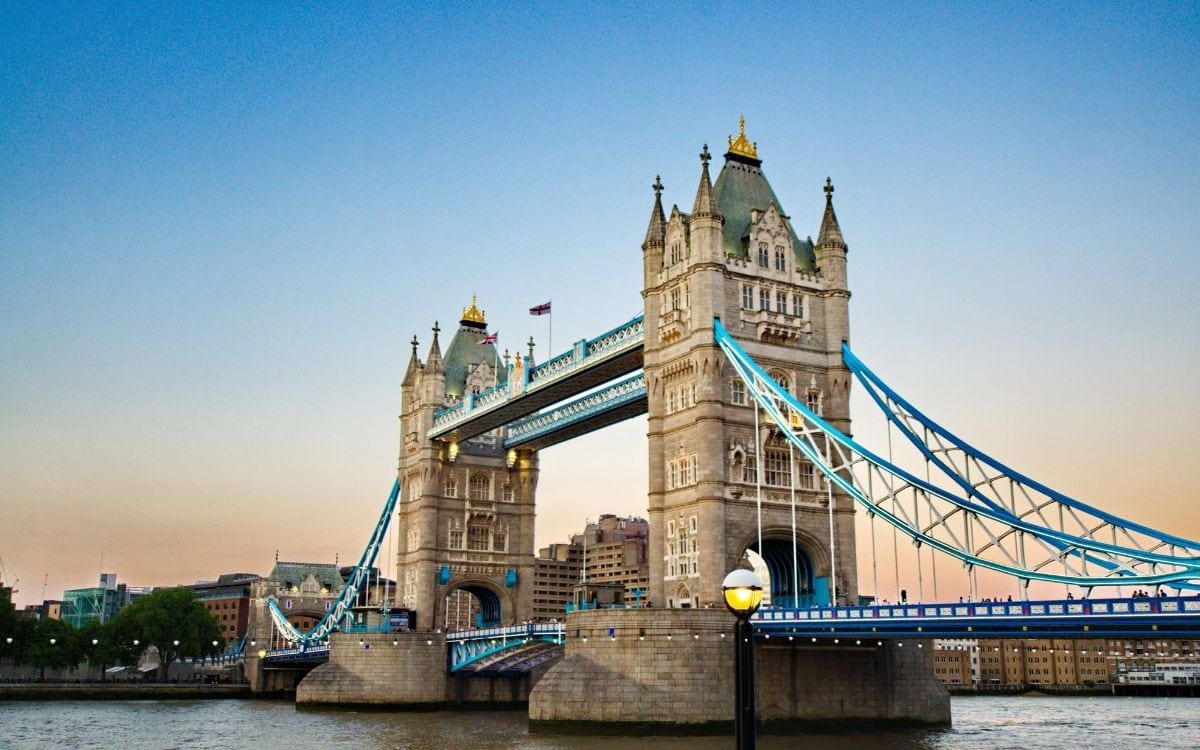
Palace of Westminster
The Parliament of the United Kingdom, which includes the House of Lords and the House of Commons, is housed in a historic palace located on the banks of the River Thames. Although the palace served as the monarch’s residence until the 16th century, its oldest part was built as early as 1097. The palace is only open to the public during parliamentary recesses.
Westminster Abbey
This impressive Gothic church, belonging to the Church of England, is the final resting place of English monarchs, and all English kings and queens have been crowned here since 1066. The church is also a popular venue for royal weddings, such as the marriage of Queen Elizabeth II and Philip, Duke of Edinburgh. Interestingly, you will also find a memorial here dedicated to Czechoslovak soldiers who fought during World War II.
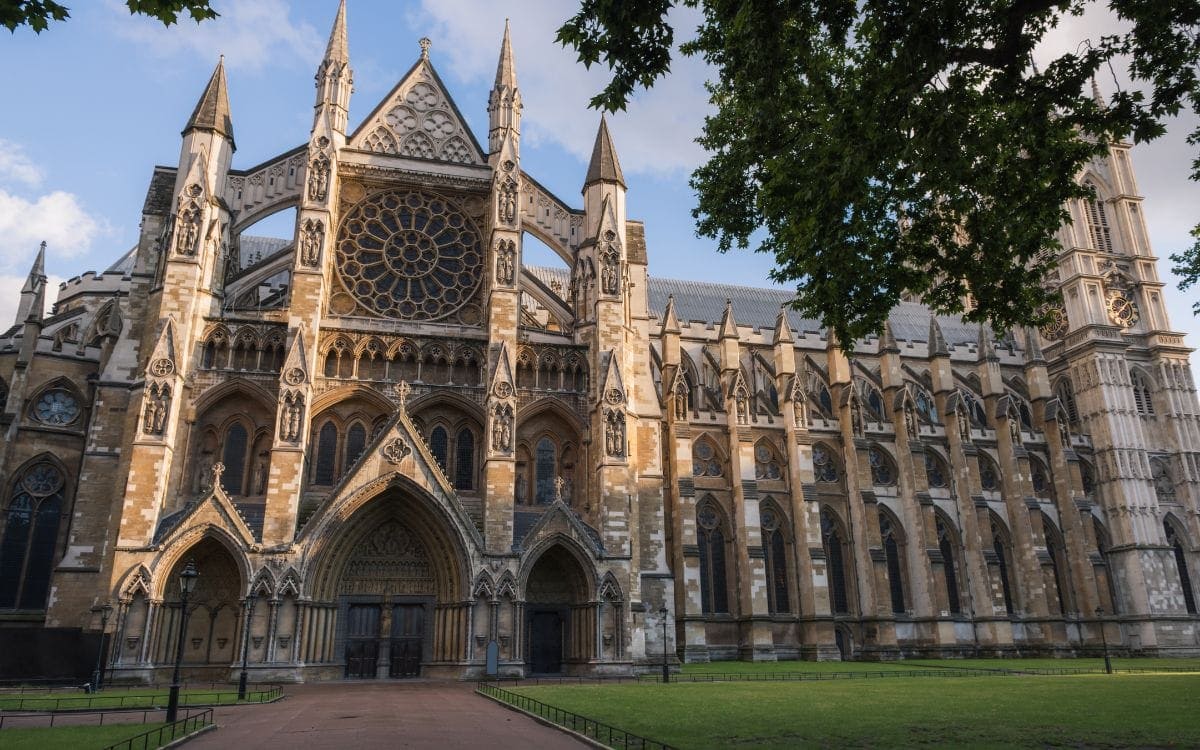
Greenwich Observatory
The Royal Observatory in Greenwich, founded in 1675 by order of King Charles II, was home to the Astronomer Royal. Currently, it houses a museum displaying a collection of astronomical and navigational instruments, and visitors can enjoy a magnificent view. Among the exhibits is a chronometer that once belonged to John Harrison.
Trafalgar Square
This square was named after the Battle of Trafalgar in 1805, which marked the victory of the British Navy in the Napoleonic Wars. The current appearance of the square dates back to 1845, and not much has changed since then. Nelson’s Column stands in the center of the square, surrounded by fountains. Four bronze lions also stand nearby. On the north side of the square, you’ll find the National Gallery.
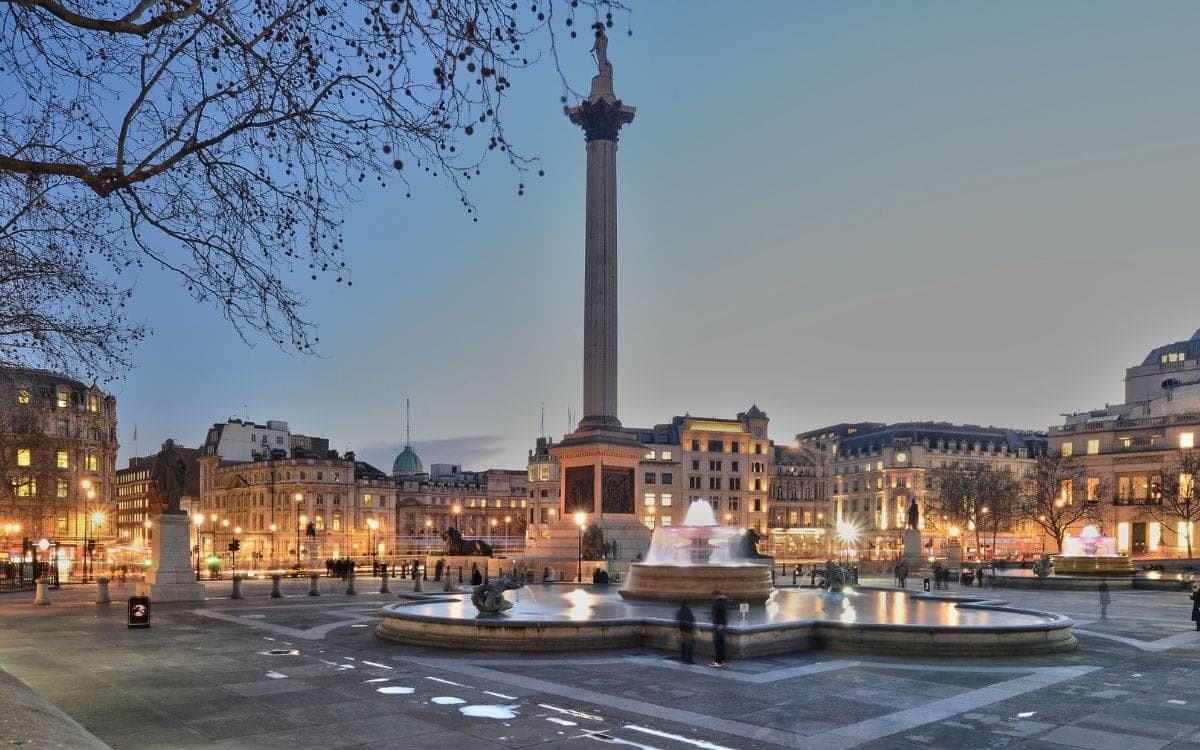
Downing Street
Downing Street is probably the most famous street in central London, located near the Palace of Westminster. The address 10 Downing Street is known as the official residence of the British Prime Minister, but other important institutions, such as the Cabinet Office and the Treasury, are also located on the same street.
Churchill War Rooms
These extensive premises were established in 1938 with the aim of serving as a venue for government meetings. The bunker rooms were designed for protection, but today only a part of the facility is accessible to the public. In the center of the bunker is the Cabinet Room, where Churchill’s government meetings were held.
The entire museum is now arranged to evoke its period of origin as much as possible, including maps hanging on the walls. The Churchill Museum then offers a collection documenting the life of this statesman. Admission is 27.25 GBP, and entry is free for children under 5.
The Monument to the Great Fire
The Monument is a 62-meter-tall tower, erected as a reminder of the Great Fire, which destroyed a significant part of London in 1666. You can climb the tower via 311 steps. It is located near London Bridge.
The Globe Theatre
Today’s Globe Theatre is a replica of the original, where William Shakespeare’s plays were performed. It stands on the bank of the Thames, and summer Shakespeare festivals are held here every year. Today, it also houses the largest Shakespearean museum in the world.
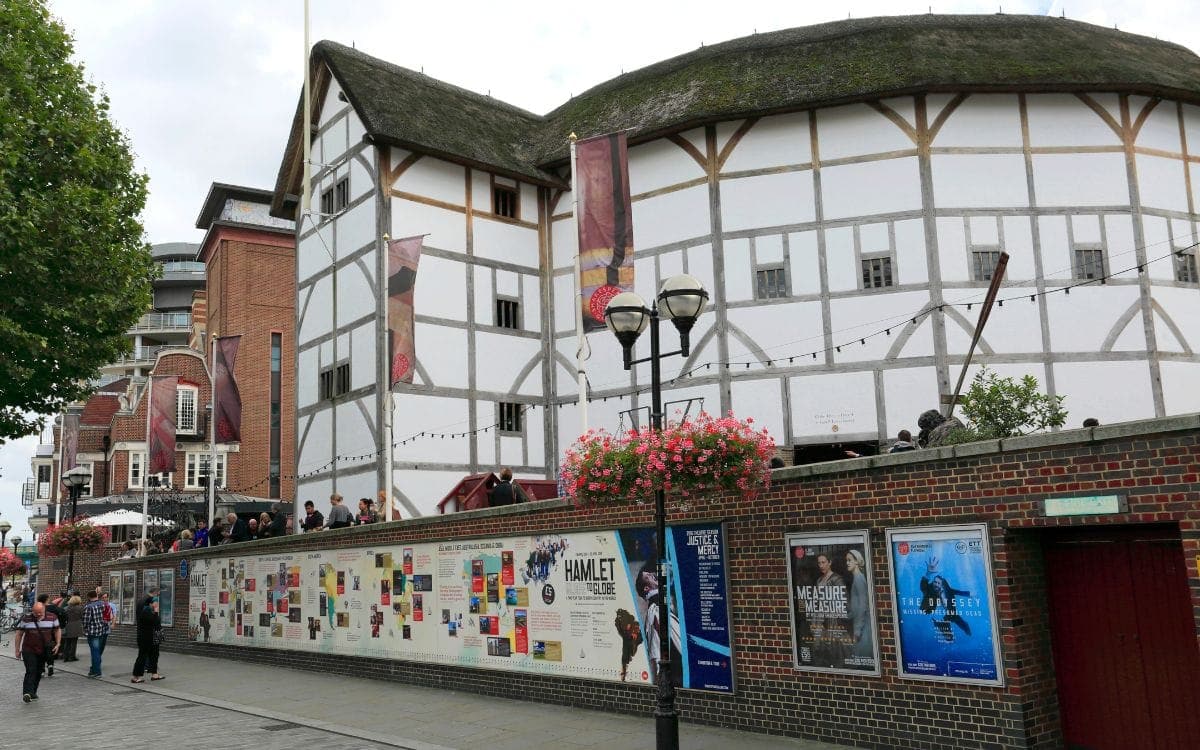
Camden
Camden Town is a district full of nightlife, jazz bars, old-world pubs, and affordable restaurants. It is primarily a haven for alternative culture; if you’re looking for an unconventional experience, be sure to visit the local markets.
Baker Street
Almost everyone associates this famous street with the literary character Sherlock Holmes. He lived here, specifically at the non-existent address 221B. The street is located in Westminster, and you can find, for example, the Sherlock Holmes Museum here.
Modern Buildings and Districts in London
The Shard
The London skyscraper whose name translates to “the shard”. It got this name from its appearance. It is the tallest building in the United Kingdom, ranking seventh globally, with a height of 310 meters. The skyscraper houses offices, apartments, a hotel, and at the very top, an observation deck. The building was designed by Renzo Piano.
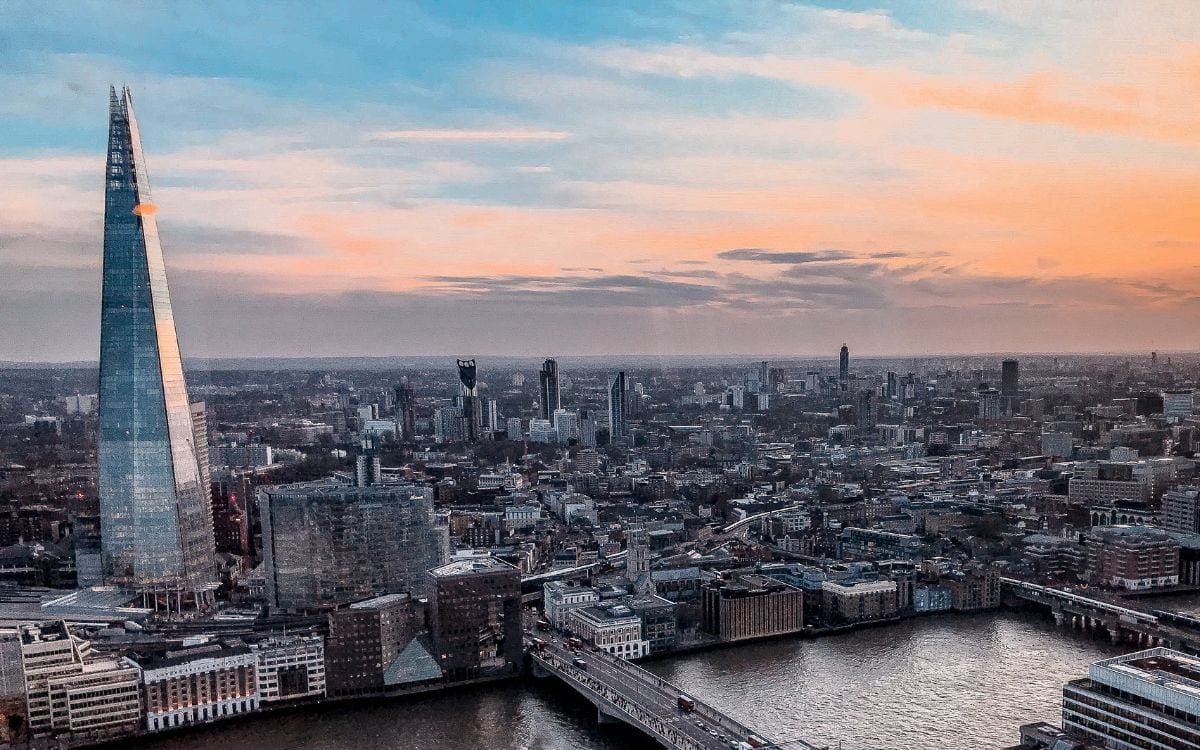
Piccadilly Circus
This famous square in London connects two commercial streets, Regent Street and Piccadilly. It got its name from its shape. The square’s main attractions are its neon advertisements, the Shaftesbury Memorial Fountain, and the London Pavilion.
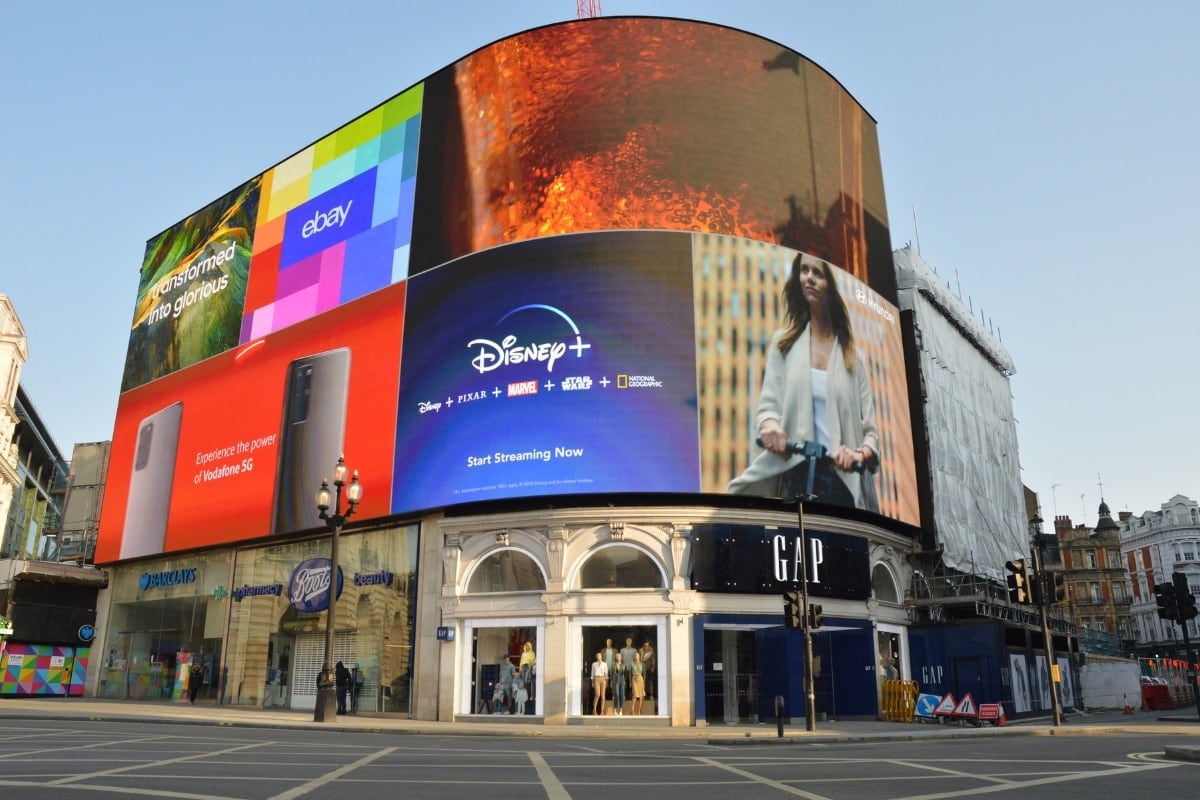
Soho
Soho is one of the most famous districts in London’s Westminster. Once pastures, it is now a multicultural area with a vibrant nightlife. It offers cafes, restaurants, cinemas, fashion shows, and much more. Soho is also a center for independent film and theater. It gained notoriety due to its past association with the adult entertainment industry, which is currently under control.
Part of the district is also Chinatown, which is the center of the Chinese community in London. Here you can visit many Chinese restaurants, shops, and admire the decorations. Chinese New Year celebrations take place here annually.
Shoreditch
It is an artistic area full of creative artists, designer restaurants, and painted buildings. In the 19th and 20th centuries, Shoreditch was an artistic hub with many theaters and concert halls. If you’re looking for nightlife, entertainment, art, and culture, you shouldn’t miss Shoreditch. Alternatively, you can even stay here.
Harrods
In central London, just a short distance from Hyde Park, stands arguably the most famous, luxurious, largest, and longest-running department store in the world. Its total retail space exceeds one million square feet. Here you can find luxury brand clothing, perfumes, toys, pet supplies, wedding dresses, books, electronics, furniture, a yacht, an airplane, funeral services, or even a medical ambulance. A. A. Milne bought the original Winnie the Pooh here, which later inspired the charming stories, and President Ronald Reagan purchased a baby elephant here. Of course, you can also enjoy a good meal here. If you’re in London, you shouldn’t miss visiting this “city within a city”.
What to Visit in London: Best Museums in London
British Museum
Located in Camden, it is one of the world’s most significant museums, with a collection comprising several million items. The exhibition traces the history of humanity, divided into several sections by period and location. For example, you can find Cleopatra’s mummy, Michelangelo’s drawings, or a Moai statue from Easter Island. Admission is free.
Tate Modern – Museum of Modern Art
If you’re a fan of contemporary art like me, you’ll probably head to Tate Modern. Founded by Henry Tate in 1897, it is now one of the world’s most popular modern art galleries. It’s a network of galleries, with Tate Britain being one of its branches. Artists exhibited here include Moor, Dalí, Picasso, Monet, and Mondrian. The setting is also interesting, as this gallery was originally a power station.
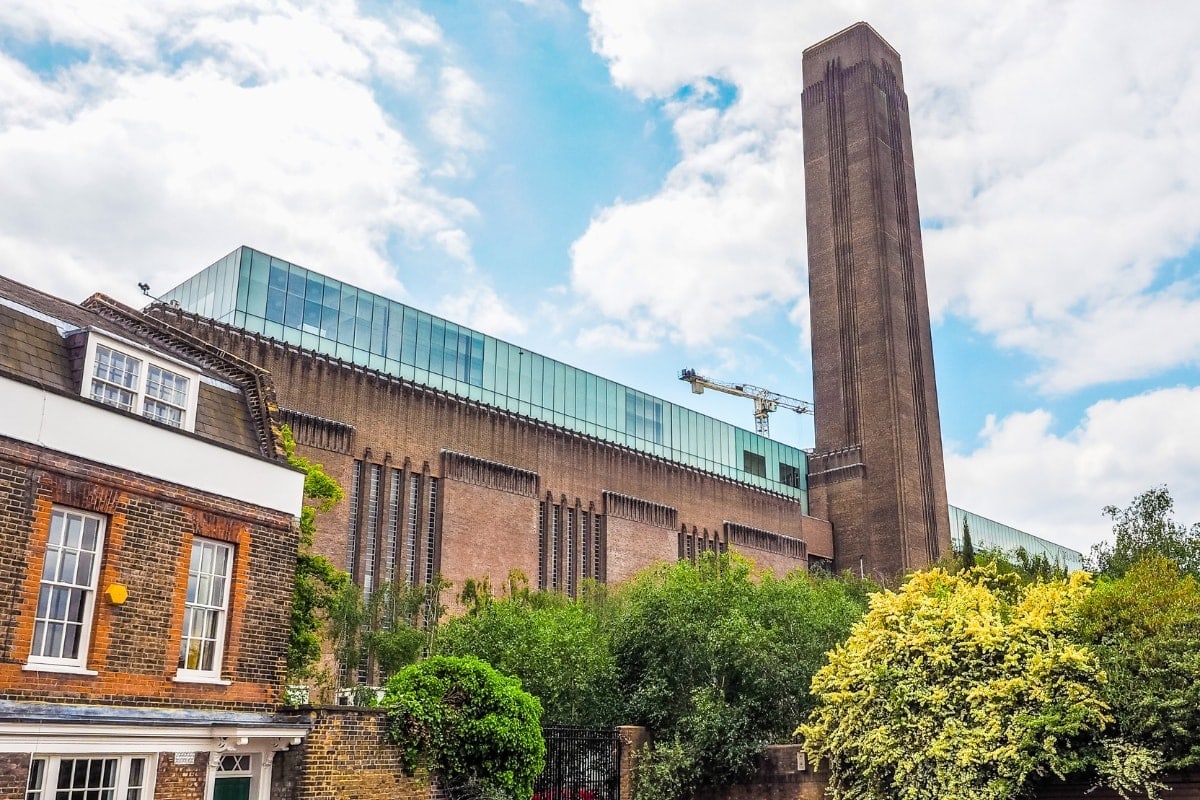
Brixton Academy
Concerts are still held in this concert hall today, which has a capacity of 5,000 people. In the past, artists like Green Day and Madonna performed here. Since 2009, the official name of this building has been O2 Academy Brixton.
The National Gallery
The fifth most visited museum in the world, it boasts a collection of over 2,000 paintings by renowned artists from 1250 to 1900. You can view works by Piero della Francesca, Leonardo da Vinci, Velázquez, and Rembrandt for free. The biggest draw is Vincent van Gogh’s Sunflowers, along with pieces by other Impressionists.
What to See in London: Parks and Nature
Hyde Park
This royal park in central London is one of the city’s largest. It gained fame not only for hosting free live performances by bands like The Rolling Stones and Queen in the last century. Hyde Park is a wonderful place for a walk and relaxation, and the famous Marble Arch is also located here.
Regent’s Park
The Regent’s is another royal park; you’ll find flower gardens, sports fields, a lake, and a zoo here.
Sky Garden
The garden in the clouds is located at a height of 140 meters, specifically on the 36th floor of “The Fenchurch Building” skyscraper. Besides beautiful exotic plants, there are also restaurants and cafes, and thanks to the fully glass building, it offers one of the most beautiful views of London.
What to Do in London: Viewpoints
Besides the already mentioned London Eye, The Shard, Sky Garden, and the Observatory, you can enjoy other viewpoints in London:
- Oxo Tower – a beautiful and breathtaking view of London, located in the South Bank district.
- Parliament Hill – a 98-meter high peak that is part of Hampstead Heath park. At the top, you’ll enjoy beautiful views of the city from a distance.
- St. Paul’s Cathedral – a very popular viewpoint located directly in the dome. To enjoy it, you have to climb 530 steps on foot.
- Primrose Hill – right in the center of this park is a 64-meter high peak. From here, you’ll also get beautiful views.
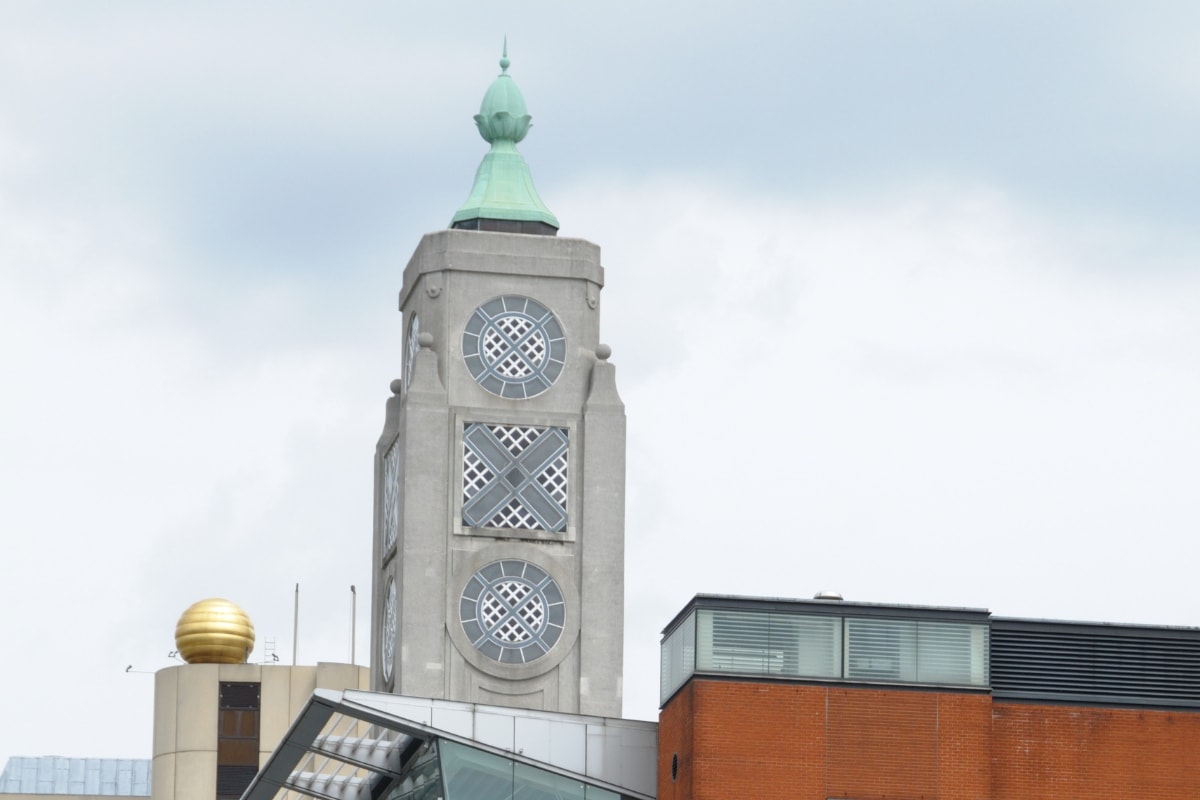
Harry Potter – Places to Visit in London
London is strongly connected to the world of Harry Potter, as the entire story originated right here. If you’re a Harry Potter fan, it’s your duty to follow in his footsteps. If you speak English, we recommend going on one of the walking tours. We took it and were thrilled.
Platform 9 ¾
At London’s King’s Cross Station, between platforms 9 and 10, there’s a secret entrance to Platform 9 ¾. From here, Hogwarts students departed for school every year. You can also stand by the trolley sticking out of the stone wall and try to see if you can reach the magical platform, or if you’re just an ordinary Muggle.
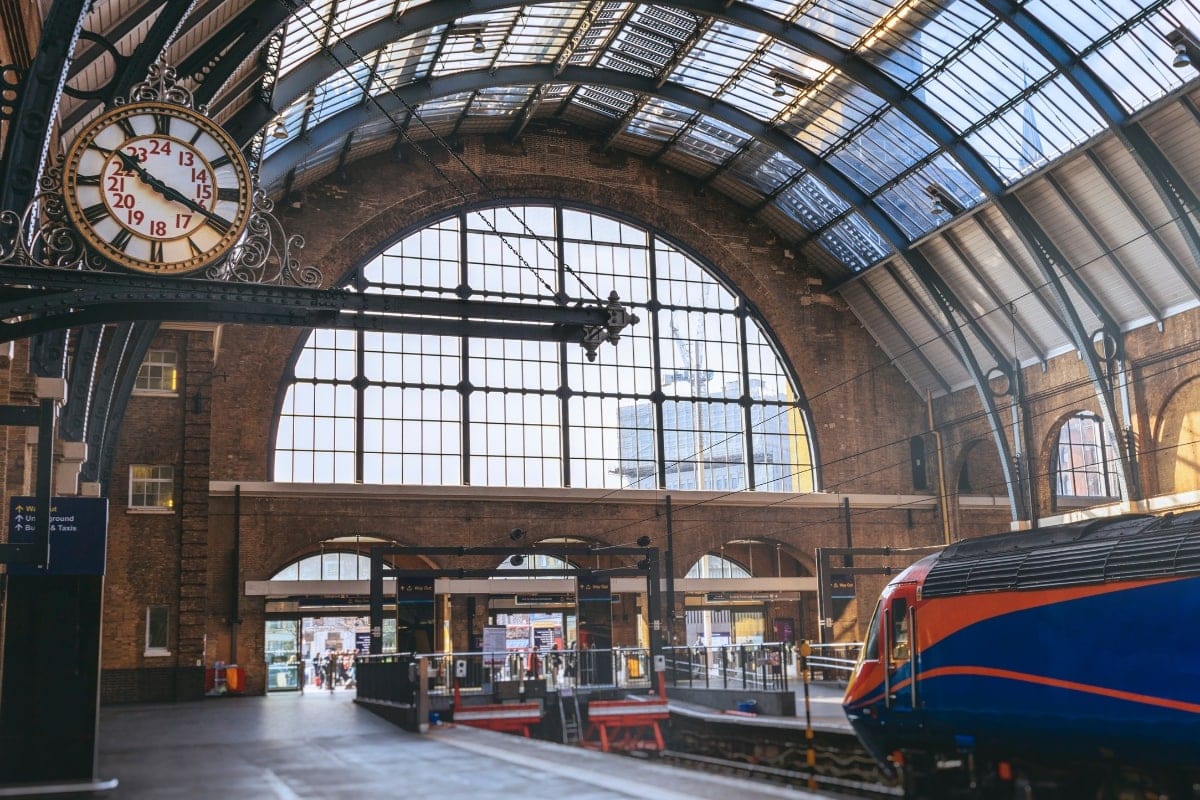
Charing Cross Road
This street near Trafalgar Square was the inspiration for the Muggle street where the Leaky Cauldron was located. That’s where Hagrid took Harry when he went shopping in Diagon Alley. In reality, you’ll find many bookstores and antique shops here.
Reptile House
In the first Harry Potter film (Harry Potter and the Philosopher’s Stone), at the beginning, Harry goes to the zoo with his aunt, uncle, and spoiled cousin, specifically to the reptile house, where Harry talks to a snake. This scene was filmed at the zoo in Regent’s Park.
Millennium Bridge
You certainly didn’t miss this bridge in Harry Potter. In Harry Potter and the Half-Blood Prince, it is the Millennium Bridge that Voldemort’s Death Eaters destroyed. The bridge crosses the River Thames, and despite the Death Eaters, you can still walk across it.
12 Grimmauld Place
At this address stands the Black family home, where members of the Order of the Phoenix established their headquarters. This headquarters will only appear if a member of the Order invites you, but you can still walk around the area. You can find this place at 23–29 Claremont Square.
Diagon Alley
For ordinary mortals, Leadenhall Market is just a beautiful street; for wizards, it’s Diagon Alley, where you can find everything needed in the wizarding world, from wands to cauldrons to books. In Leadenhall Market, the entrance to the optician’s in Bull’s Head Passage is actually the exit to Diagon Alley from the Leaky Cauldron.
Piccadilly Circus
Harry, Ron, and Hermione moved to this very square from Bill and Fleur’s wedding to escape the Death Eaters after the Ministry of Magic fell. The scene was originally supposed to take place elsewhere, but the screenwriters ultimately chose this square.
Privet Drive
4 Privet Drive, Little Whinging, this was the address of the Dursleys’ house where Harry grew up. This house is actually located at 12 Picket Post Cl, Winkfield Road.
Gringotts Bank
If you run out of Galleons, head to Gringotts Bank. You’ll find it in the Australia House building in central London. However, the interior is not accessible to the public.
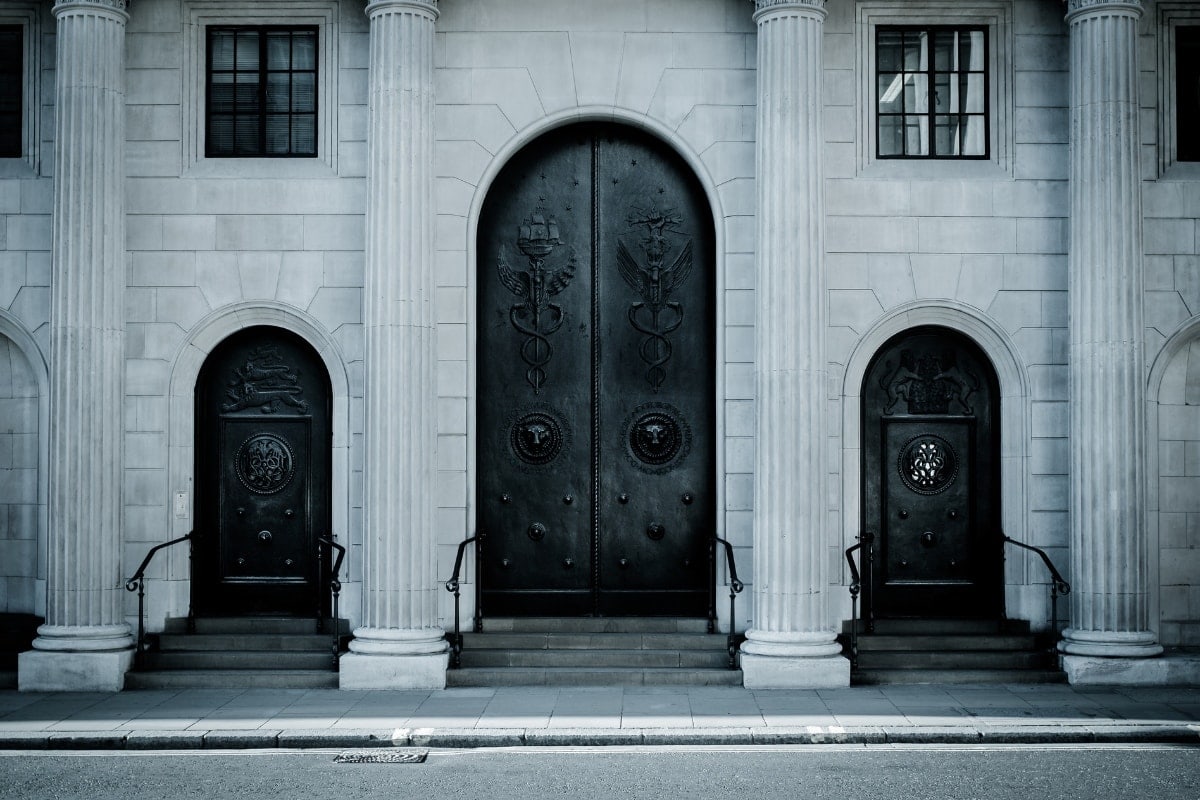
Warner Bros. Studio
This studio is entirely dedicated to the world of Harry Potter, and if you’re a true fan, you shouldn’t miss it. You’ll find all the film locations together here: walk through Diagon Alley, see the Great Hall, peek into Dumbledore’s office without even knowing the secret password (lemon drops are long outdated anyway), and explore the common rooms of the houses. Additionally, you can view all the props and actors’ costumes.
Harry Potter and the Cursed Child Play
The play The Cursed Child was written later by Jack Thorne and John Tiffany under the supervision of J. K. Rowling herself. If you’re fluent in English, don’t miss the live performance at The Palace Theatre. If you didn’t manage to buy a regular ticket well in advance, a last-minute ticket can cost you more than 400 GBP.
Harry Potter “Tour”
Would you like to visit all Harry Potter locations but don’t know how to manage it all? You can take advantage of the offered “Harry Potter tours”; just choose what interests you most: a trip to Warner Bros. studios, a walk through London following Harry Potter’s footsteps, a Harry Potter tour for Muggles, or a private taxi tour of elite Harry Potter locations.
Tip: If you want to recall the magical places associated with Harry Potter, don’t forget to rewatch the entire Harry Potter film series. On tvpoke.cz, you can find out where to watch Harry Potter (more here).
What to Do in London: Day Trips Around
London is a great place for day trips around. If you don’t want to go on your own, book one on the GetYourGuide portal. However, we recommend visiting:
- Windsor: Just an hour by train from London is Windsor, a town with the iconic Windsor Castle.
- Oxford: Oxford, known for its prestigious university, is only an hour away from London by train. The city will captivate you with its historical architecture and university colleges, such as Christ Church College, which inspired the Harry Potter films.
- Stonehenge and Salisbury: Stonehenge is one of the most famous prehistoric sites in the world. Located approximately two hours from London, it’s ideal to combine its visit with the nearby city of Salisbury.
- Cambridge: Another university city worth visiting is Cambridge, about an hour from London. Besides visiting university colleges like King’s College, don’t miss a punt ride on the River Cam.
- Brighton: If you fancy a seaside stay, head to Brighton, which is about an hour by train from London. The city is known primarily for its colorful streets, The Lanes, and the iconic Brighton Pier.
- Cotswolds: The Cotswolds is an area of natural beauty, located about two hours from London. This rural area is known for its villages with honey-colored stone houses. Among the most beautiful villages are Bibury, often referred to as the most beautiful village in England, and Castle Combe.

London Itinerary: What to See in London in 3 Days
If you’re planning a three-day trip to London, you can manage to see the most iconic sights and get a taste of local life.
The first day should be dedicated to the historic center. Start at Buckingham Palace, where you can see the Changing of the Guard, and continue through St. James’s Park to Westminster Abbey. Here you can explore one of the most significant places in English history, where coronations and royal funerals take place. Don’t forget to stop at Big Ben and the Houses of Parliament.
Then cross to the other side of the river to the London Eye, which offers a magnificent view of the city. In the evening, you can finish in Covent Garden, where you’ll find restaurants, bars, and street performers.
On the second day, you should dedicate your time to East London. Start at the Tower of London, where the Crown Jewels are located. Then cross Tower Bridge and walk along the South Bank, where you can have coffee or lunch with a view of the Thames. Also visit Tate Modern, which offers world-class modern art, and Shakespeare’s Globe Theatre, a replica of the original Elizabethan-era theatre. In the afternoon, you can spend time at Borough Market, where you can taste great food from all over the world, or take a boat trip on the Thames.
On the third day, head to the British Museum, which has astonishing collections from around the world. Alternatively, you can visit the Natural History Museum or the Victoria and Albert Museum. After the museums, relax in Hyde Park or Regent’s Park. If you enjoy a bohemian atmosphere, visit Notting Hill with its colorful houses and picturesque shops. End the evening with shopping on Oxford Street or in the Soho district, where you’ll find many restaurants and bars.
What to See in London in 4 Days
If you have 4 days in London, try this itinerary:
Day 1: Classic London
- Buckingham Palace and Changing of the Guard (morning)
- Walk through St. James’s Park
- Westminster Abbey and Big Ben
- Ride on the London Eye (city view)
- Evening walk along the South Bank (e.g., to Tower Bridge)
Day 2: History and Culture
- Tower of London (Crown Jewels tour)
- Tower Bridge (visit to the viewing gallery)
- Borough Market (lunch and market atmosphere)
- Tate Modern (modern art, free admission)
- St. Paul’s Cathedral
Day 3: Royal Gardens and Museums
- Hyde Park and Kensington Gardens (visit to Kensington Palace)
- Natural History Museum or Science Museum (free admission)
- Victoria and Albert Museum (art and design, free)
- Walk along Oxford Street or Regent Street (shopping)
- Evening in Covent Garden (theatres, street performers)
Day 4: Alternative London
- Camden Market (unconventional market and street art)
- Walk along Regent’s Canal
- Visit Primrose Hill (beautiful city view)
- British Museum (history, free admission)
- Chinatown and Soho (dinner and evening entertainment)

What to See in London in 2 Days
If you only have 2 days in London, you can manage to see these sights:
Day 1: Most Famous Sights
- Buckingham Palace and St. James’s Park
- Westminster Abbey and Big Ben
- Ride on the London Eye
- Tower of London and Tower Bridge
- Evening walk along the South Bank
Day 2: Museums and City Atmosphere
- Hyde Park and Kensington Gardens
- Natural History Museum or Victoria and Albert Museum
- Walk along Oxford Street or Regent Street
- Covent Garden and Soho
What to See in London in 1 Day
And if you only have one day in London, don’t despair, you can still enjoy your visit. Definitely visit:
- Buckingham Palace (exterior viewing)
- Walk through St. James’s Park to Westminster Abbey and Big Ben
- Ride on the London Eye
- Tower of London and Tower Bridge (exteriors only)
- Short stop in Covent Garden or Soho for dinner
What to See in London for Free
London is known as one of the most expensive cities in the world, but it offers many activities that won’t cost you a single pound. You can start by visiting some of the museums that are free – among the most popular are the British Museum, Natural History Museum, and Tate Modern.
If you love nature, head to one of London’s parks, such as Hyde Park, Regent’s Park, or Greenwich Park. In Hyde Park, you can enjoy Serpentine Lake, while Greenwich Park offers a beautiful view of the city from Observatory Hill. Another great place is Sky Garden – a high-rise building with a magnificent view of London, which you can access for free if you book your entry in advance.
For lovers of street art and culture, Shoreditch is ideal, where you’ll find famous street art, including works by Banksy. Another tip is Camden Market, where you can soak up the bohemian atmosphere and browse stalls with art or fashion. And if you love music, don’t miss Covent Garden, where street musicians often play.

London: Unusual Places
If you’re looking for something less touristy in London, you’ll find spots that show you a different side of the city. Start, for example, in the Hackney district, which is known for its independent cafes, galleries, and local markets, such as Broadway Market.
Another interesting place is God’s Own Junkyard, a gallery of neon signs and lights, which is a true experience. You’ll find it in the Walthamstow area. If architecture appeals to you, head to the Barbican Centre – a brutalist building that serves as a cultural center with concert halls, galleries, and a winter garden.
Nature lovers shouldn’t miss a visit to Epping Forest, a vast forest park in northeast London. Also of interest is Highgate Cemetery, an ancient cemetery where famous personalities, such as Karl Marx, rest.
If you want to experience London a bit differently, visit Little Venice, an area with canals where you can see colorful houseboats and enjoy a peaceful atmosphere.
London’s underground secrets also offer an unusual experience, such as a tour of abandoned tube stations or a visit to The Old Operating Theatre Museum, where you can learn more about the history of medicine.
Where to Go for Football in London
Unfortunately, you won’t be able to attend a Quidditch match, but England has great football teams. So if you’re a sports fan, don’t miss a match! Which teams can you support here?
Films Shot in London
Many films and series have been shot in London, some of which are internationally known and iconic. Here are a few examples:
- Harry Potter – many scenes were filmed at various locations in London, including King’s Cross Station, where the famous Platform 9 and 3/4 is located.
- Bridget Jones’s Diary – the main characters of the film live in London, and a large number of scenes were filmed at various locations, including Borough Market and Tower Bridge.
- Paddington – this film is set in London, and you can see a number of locations in the film, including Paddington Station and Portobello Road.
- James Bond – many scenes from various films were shot in London, including action sequences on Tower Bridge and at the MI6 building.
- Sherlock Holmes– the main characters walk through the streets of London, and many scenes were filmed in various locations in the city center.
- Notting Hill – The famous romantic comedy starring Julia Roberts was filmed on Portobello Road and in the surrounding area.
- V for Vendetta – was partially filmed in London, including action scenes in Trafalgar Square and the Underground.
Where to Eat in London
We’ve put together a list of luxury and affordable restaurants so you can choose according to your preference.
Luxury Restaurants in London
- The Ledbury – modern European cuisine with 2 Michelin stars.
- Core by Clare Smyth – modern British cuisine with 3 Michelin stars.
- Hawksmoor – specializes in steaks and meat dishes and has several branches in London.
- The Palomar – Israeli cuisine.
- Hakkasan – modern Chinese cuisine in an elegant setting.
- St. John – traditional British cuisine with an emphasis on seasonality and quality ingredients.
- Sketch – an original restaurant with several colorful rooms, each with a different design and food offering.
- The River Cafe – Italian cuisine, where you dine with a magnificent view of the Thames.
- Gymkhana – Indian cuisine in a luxurious setting.

Affordable but Excellent Restaurants in London
If you’re looking for affordable meals, we have a few restaurant tips for you. Prices are approximate and constantly rising, so take them with a grain of salt.
- Dishoom – Indian cuisine with reasonable prices, several branches in London.
- Franco Manca – pizzeria with prices starting from 5 pounds, several branches in London.
- Bao – Taiwanese bistro offering meat and vegetarian dishes, several branches in London.
- Honest Burgers – specializes in burgers, several branches in London.
- Homeslice – pizzeria with prices starting from 4 pounds per slice, multiple branches in London.
- Flat Iron – specializes in steak with a price around 10 pounds, with several branches in London.
- Padella – Italian cuisine with prices starting from 5 pounds, specializing in pasta and risottos.
- The Breakfast Club – offers traditional breakfast and brunch with prices around 10 pounds, with several branches in London.
- The Regency Cafe – traditional cafe offering English breakfasts and various dishes, with prices around 5 pounds.
- KaoSarn – Thai cuisine with prices starting from 7 pounds, with several branches in London.
10 Tips for Things to Do in London with Kids
It always depends on your children’s age. But London has plenty of activities that kids will enjoy. If they are Harry Potter fans, you definitely must visit the locations mentioned earlier in the article.
- London Zoo – visit one of the oldest and largest zoos in the world, located in Regent’s Park.
- Natural History Museum – the museum offers many fascinating exhibits, including dinosaur fossils and meteorites.
- Science Museum – a fun and interactive museum for all little science enthusiasts.
- Madame Tussauds – kids love the wax museum; I still remember it from my first visit to London.
- London Eye – the view from this tallest Ferris wheel in Europe offers beautiful panoramic views of the city.
- Harry Potter studio tour – for Harry Potter fans, this interactive tour of the Harry Potter film sets is an unforgettable experience.
- Warner Bros. Studio Tour London – The Making of Harry Potter – a tour of the Warner Bros. studios where the Harry Potter films were shot, including original costumes, props, and sets.
- Tower of London – a historic fortress with many interesting stories and legends you can tell your children during your visit.
- Hamleys – the largest toy store in Europe with many attractions and fun activities for children.
- Legoland Windsor – located about an hour’s drive from London, this attraction offers plenty of fun for children, including rides inspired by Lego bricks.
What to Do in London when it Rains?
It rains quite often in London, so I wouldn’t be deterred by light rain. However, if it’s raining really heavily, you can use the time to visit museums mentioned earlier in the article. Our favorites include: British Museum, Tate Modern, National Gallery. If you speak English well, try booking a West End Show.
London: Map of Sights with Points of Interest for your Phone
Save a map of the best places in London directly to your phone. After purchase, you will receive a link to a private Google Map, which you can save by clicking “Follow”. This will copy it to your Google account and display it on all devices where you use Google Maps. The map will also be useful if you go to London on a school trip.
London Facts
Beneath London Lies a Giant Network of Unused Tunnels
Beneath the city lies an extensive network of abandoned tunnels, metro stations, and bunkers. Some were used during World War II, while others served as storage or escape routes. Among the famous ones is Mail Rail, a secret underground railway that once delivered mail across London.
London Has more Indian Restaurants than Delhi
British cuisine is influenced by many cultures, but nothing surpasses the popularity of Indian food. London has more Indian restaurants than Delhi, the capital of India. Among the most popular dishes is chicken tikka masala, which, according to some theories, originated in Britain.
The Famous Red Telephone Booths Have Their Own Scent
The typical London red telephone booths are not only iconic but also have their specific scent. The mixture of old metal, paper, and moisture is so distinct that it was even captured in a perfume created for the British National Gallery of Scent.
“Mudlarks” Appear on the Thames
One of the unusual London professions is called Mudlarking, which is the search for historical objects in the mud by the River Thames. This hobby (or rather, a means of survival in the past) dates back to the Victorian era, and to this day, people find old coins, bones, or even weapons on the riverbanks.
London once Had its Own Polar Bears
The Tower of London was once home to exotic animals that were gifts to English kings. In the 13th century, the Norwegian king gifted England a polar bear, which even had permission to swim in the Thames on a chain.
London Has Secret Bars You Can Only Find with a Password
The hidden culture of speakeasy bars, which were popular during American Prohibition, lives on in London. There are establishments you can only enter with a special password or if you know exactly where to ring. Popular ones include, for example, the bar Evans & Peel Detective Agency, which looks like a detective office.
Is London the Rainiest City? Not by a Long Shot!
Despite its reputation as a rainy city, London has less rainfall than, for example, Rome, Sydney, or New York. Rain is frequent, but it’s more often a gentle drizzle than heavy downpours.
London Has the World’s Oldest Underground, but It’s not the Deepest
The London Underground was opened in 1863 as the first in the world. Yet it is not the deepest – the deepest station, Hampstead, is “only” 58 meters below the surface, while the metro in North Korea is up to 110 meters deep.
London Has more Trees than People
Although it’s a huge city, London is full of greenery – it has more than 8 million trees, which is more than its population. Thanks to this, it is classified as a “forest city” by the UN.
FAQ
When is the best time to visit London?
The ideal time to visit London is in spring or autumn, when the weather is pleasant and there are fewer tourists. The Christmas season is also popular due to the festive atmosphere and Christmas markets.
What’s the best travel card to use?
For transport in London, we recommend the Oyster card, which can be easily topped up. An alternative is a contactless payment card, which works the same as Oyster.
What to try in London?
London offers many culinary experiences. Traditional fish and chips, English breakfast, or afternoon tea with typical scones are a great choice.
Tips and Tricks for Your Vacation
Don’t Overpay for Flights
Search for flights on Kayak. It’s our favorite search engine because it scans the websites of all airlines and always finds the cheapest connection.
Book Your Accommodation Smartly
The best experiences we’ve had when looking for accommodation (from Alaska to Morocco) are with Booking.com, where hotels, apartments, and entire houses are usually the cheapest and most widely available.
Don’t Forget Travel Insurance
Good travel insurance will protect you against illness, accidents, theft, or flight cancellations. We’ve had a few hospital visits abroad, so we know how important it is to have proper insurance arranged.
Where we insure ourselves: SafetyWing (best for everyone) and TrueTraveller (for extra-long trips).
Why don’t we recommend any Czech insurance company? Because they have too many restrictions. They set limits on the number of days abroad, travel insurance via a credit card often requires you to pay medical expenses only with that card, and they frequently limit the number of returns to the Czech Republic.
Find the Best Experiences
Get Your Guide is a huge online marketplace where you can book guided walks, trips, skip-the-line tickets, tours, and much more. We always find some extra fun there!
